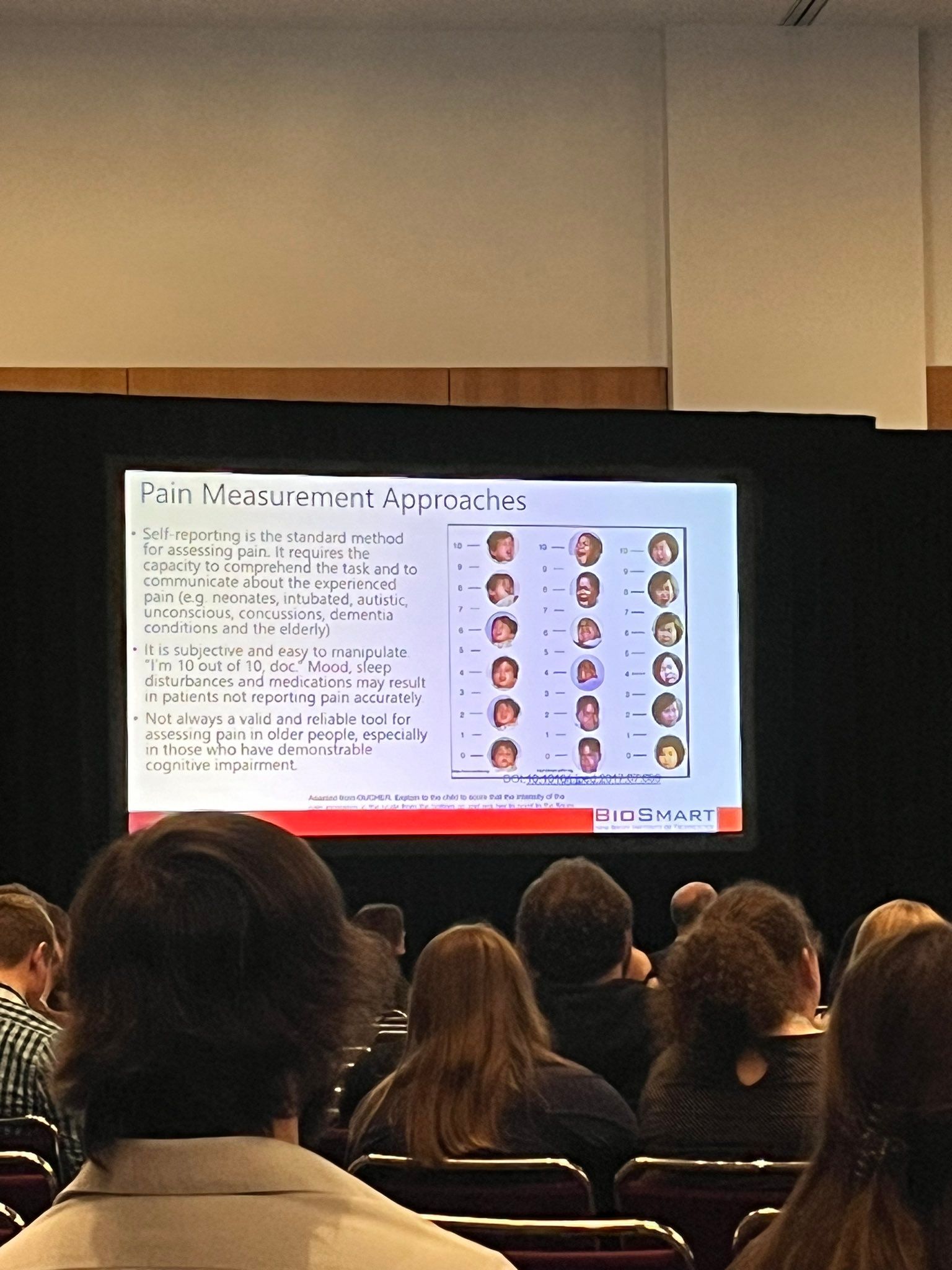Pittcon Keynote Promotes Sustainable Chemistry for Human Health and the Environment
Professor Omowunmi Sadik’s address officially opening the conference ran the gamut from pain to PFAS.
Saying she was “honored, delighted, and humbled” to be chosen for the distinction, distinguished professor Omowunmi Sadik of the New Jersey Institute of Technology (NJIT) opened the 75th Pittsburgh Conference on Analytical Chemistry and Applied Spectroscopy (Pittcon) on Sunday evening, February 25, with the Wallace H. Coulter Lecture—effectively the event’s keynote address—titled “Sustainable Nanomaterials for Sensing Human Health and the Environment” (1).
Omowunmi Sadik delivers the Wallace H. Coulter Lecture at Pittcon 2024 | Image Credit: Caroline Hroncich

The issue of sustainability is personal to Sadik; not only is she the director of the BioSMART Center at NJIT, but she is also a co-founder and the president of the Sustainable Nanotechnology Organization (SNO; susnano.org). The mention of this nonprofit, combined with Sadik’s other work in the field, helped drive home one of the key questions of Sadik’s address: How can green chemistry principles be applied to nanoscience
Chemistry as a broad concept has applications that are both obvious, according to Sadik, and far from it, using the example of cell phones and their technologies that have been shaped by the field. But there are downsides, such as various pollutants, volatile organic compounds (VOCs), and micronanoplastics.
Too often, Sadik said, researchers consider the questions of why sustainable materials are important or needed in the first place, and conclude that nanoscience has some applications, but they worry about toxicity. In contrast, she said SNO was founded by scientists who wanted to “do something about it,” and explore the possibilities further.
As a professor, Sadik stressed the need to think about all chemical reactions and how the 12 principles of green analytical chemistry can be applied—that is, if they are being taught properly to begin with.
“In academia, we have to think about how to make this happen,” she said, giving the example of trying to standardize reactions with water-soluble, biodegradable polymers in the making of greener plastics and sustainable membranes.
From there, Sadik’s talk diverted into two paths, first being green chemistry’s potential impact on human health. By 1949, she said, researchers knew that there was a molecular basis for diseases, but the Human Genome Project was not launched for another 40 years and took almost as many years after that to satisfactorily complete.
Much of Sadik’s research has centered on pain recognition in humans, for which the standard procedure has long been self-reporting. As alternatives, she described several attempts to refine the process and get to a less subjective description of pain and its levels, including a three-dimensional (3D) facial expression system in which random light patterns were projected onto subjects and a smartphone-based program called a UPAC, or ultra-sensitive portable capillary sensor.
Her team conducted a survey of nearly 600 patients, which sought to unearth the reasons for the results of some 77 “healthy” participants, and what was the lowest cyclooxygenase-2 (COX-2) level among this group.
“Pain could be physiological. Pain could be biochemical. Pain could be psychological,” Sadik said, adding that biochemical pathways often resemble subway maps where it is unclear where any of the trains are going, how fast, or when they arrive.
Pain measurement approaches | Image Credit: Caroline Hroncich

Turning the page to environmental concerns, Sadik predictably focused on the one topic she said everyone is talking about: per- and polyfluoroalkyl substances (PFAS). The well-known trouble about PFAS is that more than 5000 of them are known to exist, but very few among that large number are defined. In another anecdote she recalled a friend who tested and found them in consumables ranging from Burger King food to microwave popcorn.
And not only this, but PFAS (and perfluorooctanic acid, PFOA) are notoriously difficult to remediate, Sadik said, whether using destructive or non-destructive methods. Is there a possibility of a nano-empowered catalytic mechanism?
The IMPACT Analyzer (Innovative [nano]Materials and Processes for Advanced Catalytic Technologies to Detect and Degrade PFOA in Water) that Sadik described shows promise in this area. This shape-directing, reducing and capping agent, as she described, was able to degrade PFAS within 3 hours, in testing of wastewater. Additional illustration of the degradation of PFOA was shown with a desalting paper spray ionization (DPSI) analysis, subsequently run through a mass spectrometer.
Pittcon 2024 Welcome Reception | Image Credit: Patrick Lavery

The hope that IMPACT can be advanced to industrial scale because of advantages like low energy cost, operation at ambient conditions, mobility, and lack of oxidant additives encapsulated the theme of Sadik’s talk, that nanomaterials and sustainable chemistry might not only be able to harmonize, but eventually become acceptable mainstream strategies for learning more about and protecting both the environment and the well-being of humans.
Reference
(1) Sadik, O. Sustainable Nanomaterials for Sensing Human Health and the Environment. Presented at the 75th Pittsburgh Conference on Analytical Chemistry and Applied Spectroscopy, San Diego, California, February 25, 2024.

.png&w=3840&q=75)

.png&w=3840&q=75)



.png&w=3840&q=75)



.png&w=3840&q=75)



